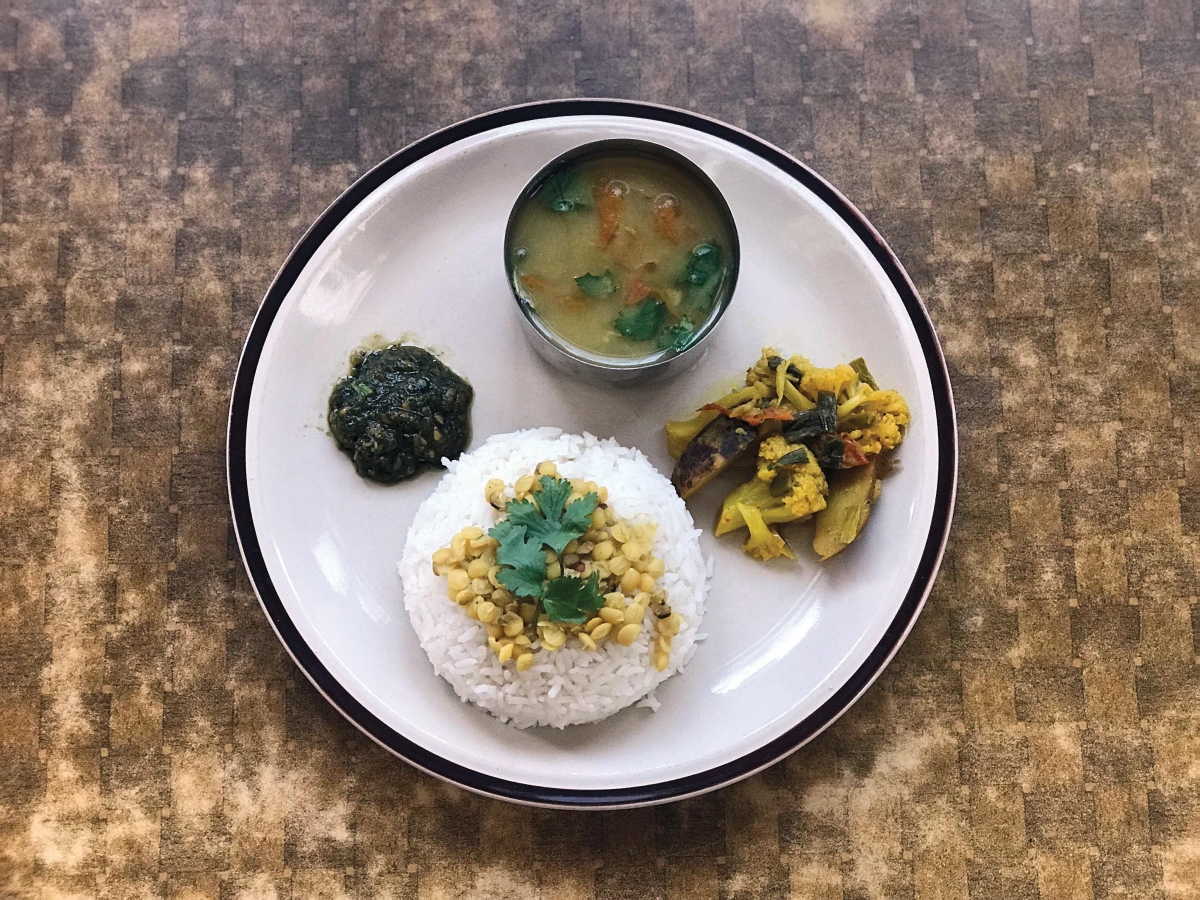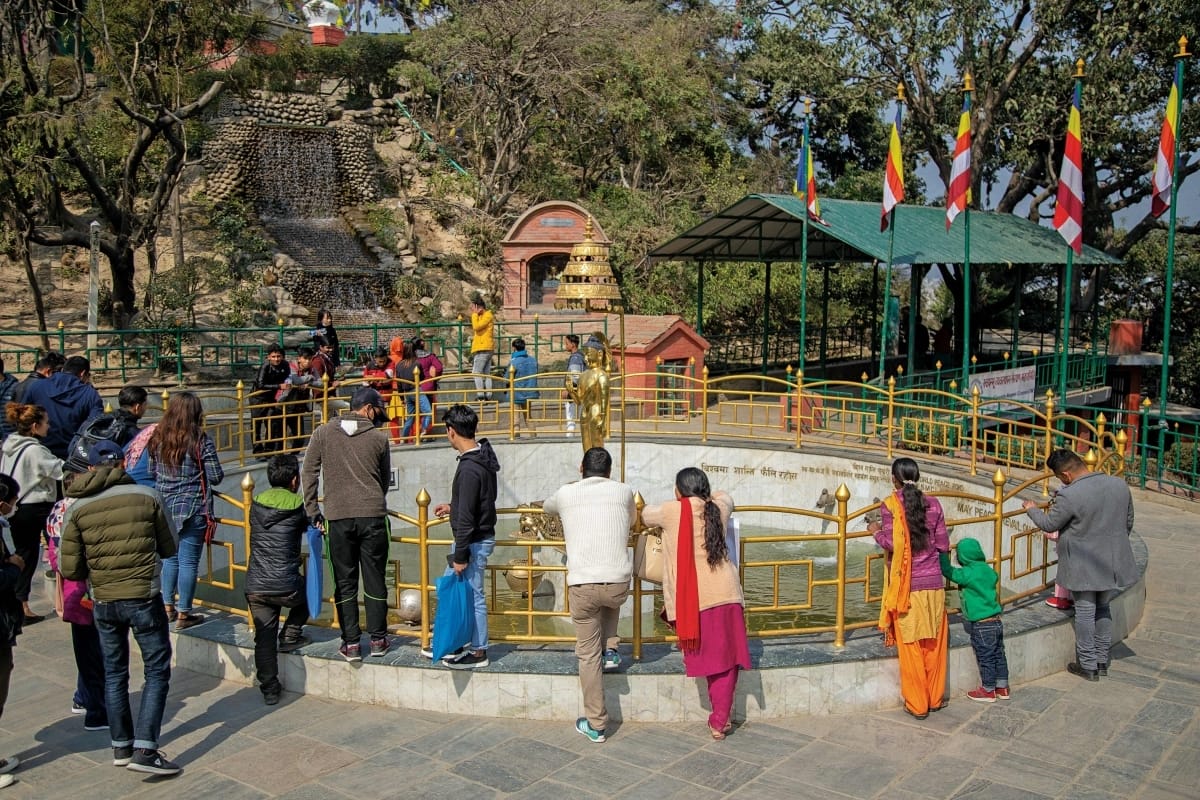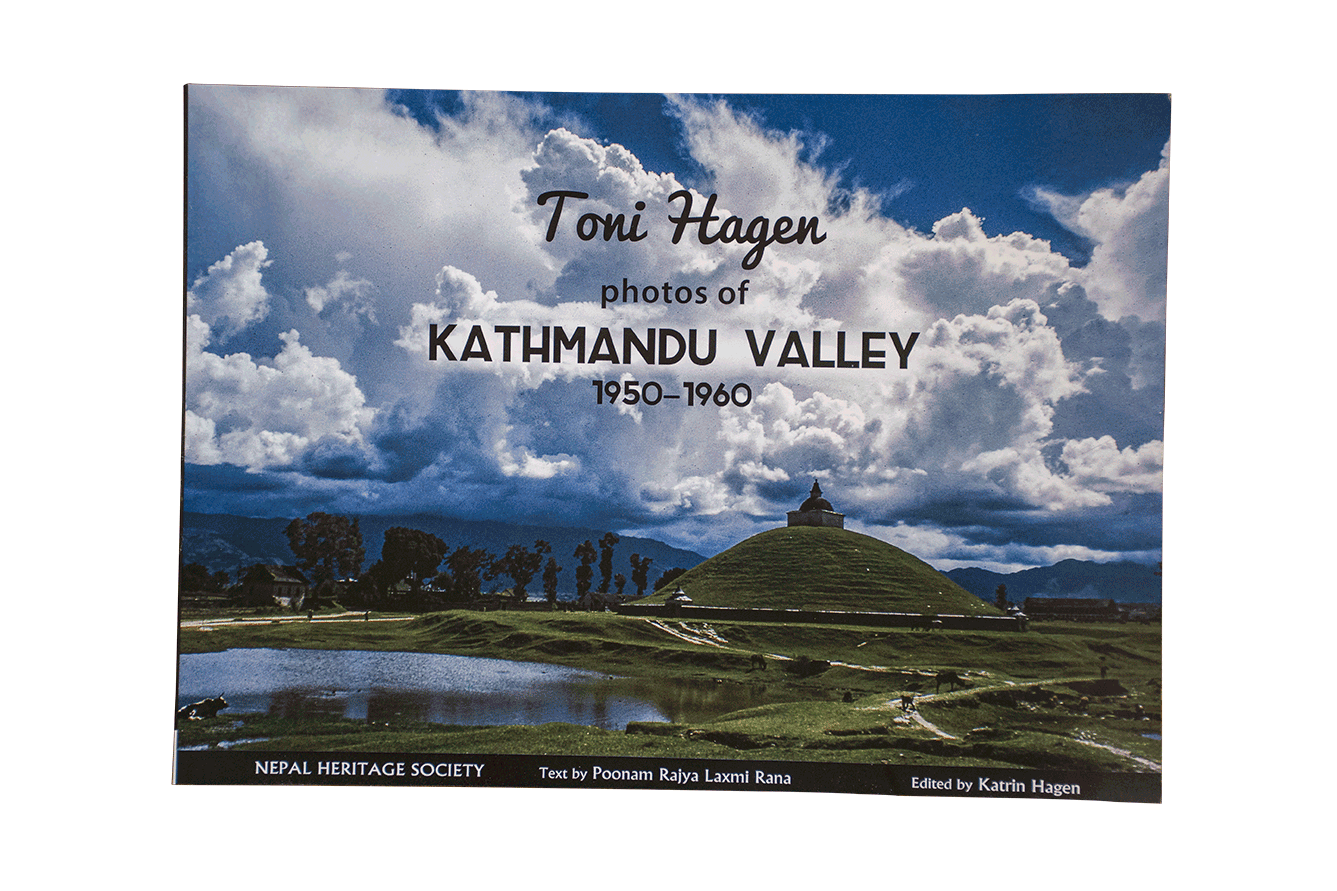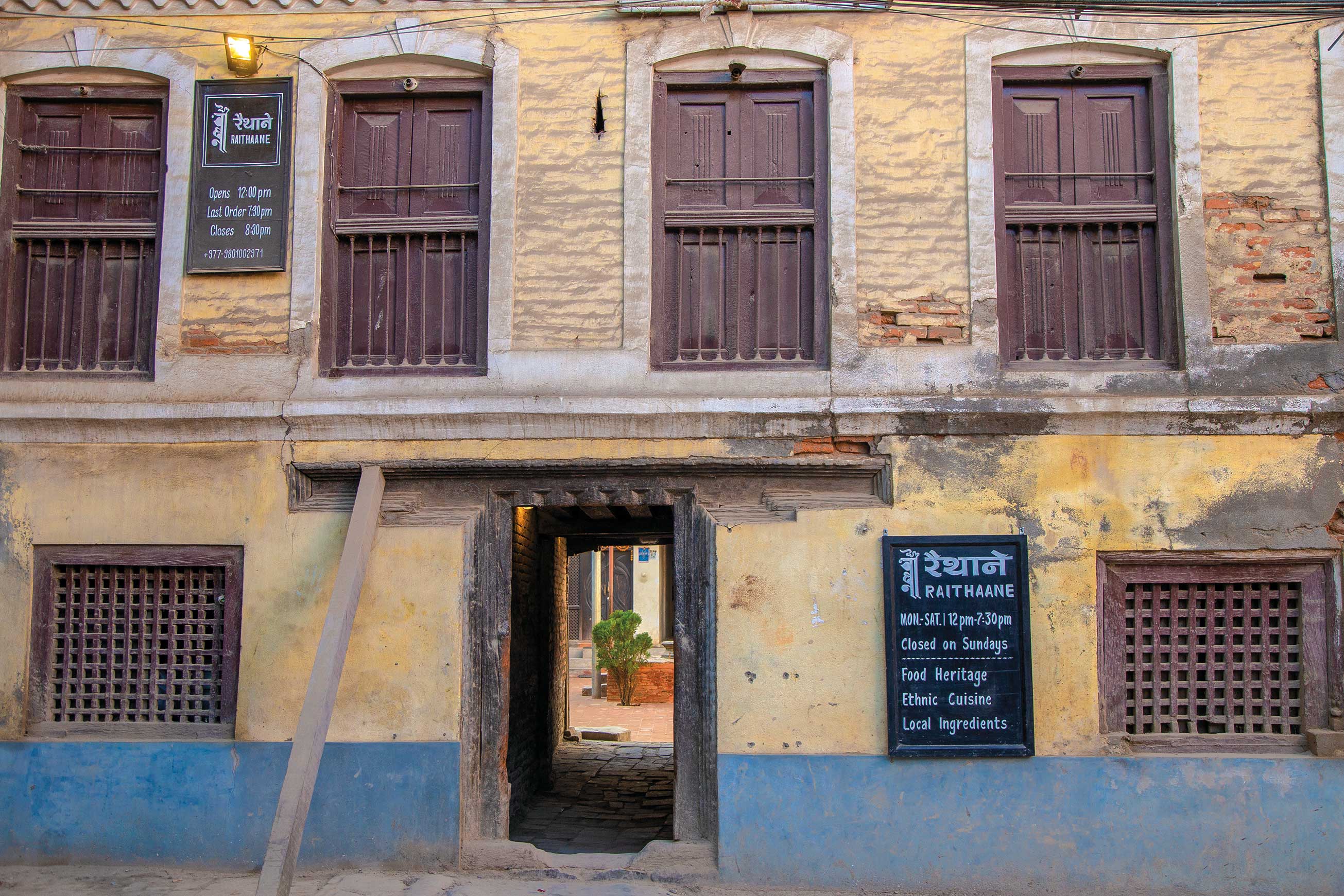At the heart of ancient Kathmandu city is a temple that is dedicated to the full (purna) pot of grains (anna). No one can really tell us how old this temple is but there is no doubt that it is as old as Kathmandu itself. If you take a little bit of time to stand next to the temple and watch, you will notice that people light butter lamps and go around the three storey pagoda structure in the clockwise direction, and offer their homage to the silver pot full of grains. Being self sufficient in food and not having to see your family go hungry is probably one of the highest goals for anyone to aspire for in life. Some “temples” in Kathmandu are dedicated to curing diseases while others to preventing tooth aches, and yet others are worshipped to keep children healthy. The one at Ason square is dedicated to ensuring that no one goes hungry.
A son is not only the location of this unique temple but also the cross roads where everything is sold and bought. From seasonal mushrooms to dried and powdered spices; and from fresh vegetables to dry beans, everything is traded here. Depending on how you count, it is quite obvious that all roads lead to Ason. Or it seems all roads lead away from Ason in every direction. All these side roads are also busy all day long selling anything from gold and silver, to rice cookers and DVD players. There are candle vendors and shoe sellers; from incense stores to dry fruit dealers. Everything is available at Ason and looking at the size of the crowd, most people seem to agree and somehow arrive at the same time.
son is not only the location of this unique temple but also the cross roads where everything is sold and bought. From seasonal mushrooms to dried and powdered spices; and from fresh vegetables to dry beans, everything is traded here. Depending on how you count, it is quite obvious that all roads lead to Ason. Or it seems all roads lead away from Ason in every direction. All these side roads are also busy all day long selling anything from gold and silver, to rice cookers and DVD players. There are candle vendors and shoe sellers; from incense stores to dry fruit dealers. Everything is available at Ason and looking at the size of the crowd, most people seem to agree and somehow arrive at the same time.
If you take a closer look at the metal bar that goes around the temple, you will notice two statues. One is of a person who is starving and the other is obese. As one looks at the full pot made of silver, and then to the left and right, we are reminded of the middle path that the Buddha has taught. Too little food or too much can and may do us harm. In Nepal we have a section of the population who do not have enough to eat; and another that is not just increasingly obese but also very wasteful. In some social circles it makes one sad to observe that wasting food is actually an indicator of wealth and prosperity. The temple icons are there to remind us to stay the middle course.
The temple at Ason also lies on the ancient trade route between India and Tibet. It is quite obvious that traders made their long and difficult trips lasting months to trade and make a profit that would ensure food security all year round. In the Nepali hills and mountains many communities continue to supplement their food production through income from livestock-raising for milk, meat and wool; as well as the manure needed to replenish the nitrate in the soil. Others trade and have livestock. In many parts of Nepal it has become impossible to feed the family for the whole year just from agriculture. For centuries Nepal has been a proud food self sufficient or ANNAPURNA country, but this is changing quite fast.











